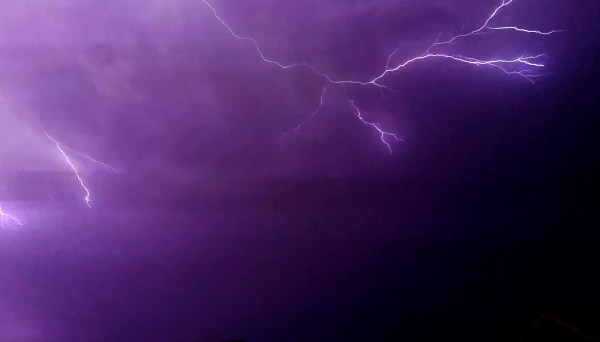Mark it on your calendars, folks — this is the week that the term RUD has entered the public lexicon. Sure, most of our community already knows the acronym for “rapid unscheduled disassembly,” and realizes its tongue-in-cheek nature. But given that the term has been used by Elon Musk and others to describe the ignominious end of the recent Starship test flight, it seems like RUD will catch on in the popular press. But while everyone’s attention was focused on the spectacular results of manually activating Starship’s flight termination system to end its by-then uncontrolled flight at a mere 39 km, perhaps the more interesting results of the launch were being seen in and around the launch pad on Boca Chica. That’s where a couple of hundred tons of pulverized reinforced concrete rained down, turned to slag and dust by the 33 Raptor engines on the booster. A hapless Dodge Caravan seemed to catch the worst of the collateral damage, but the real wrath of those engines was focused on the Orbital Launch Mount, which now has a huge crater under it.
lightning24 Articles
Turns Out, Lightning Can Strike Twice, With A Little Help
Few things are more impressive than a lighting strike. Lightning can carry millions of volts and while it can be amazing to watch, it is somewhat less amazing to be hit by lightning. Rockets and antennas often have complex lightning protection systems to try to coax the electricity to avoid striking where you don’t want it. However, a European consortium has announced they’ve used a very strong laser to redirect lightning in Switzerland. You can see a video below, but you might want to turn on the English closed captions.
Lightning accounts for as many as 24,000 deaths a year worldwide and untold amounts of property and equipment damage. Traditionally, your best bet for protection was not to be the tallest thing around. If the tallest thing around is a pointy metal rod in the ground, that’s even better. But this new technique could guide lightning to a specific ground point to have it avoid causing problems. Since lightning rods protect a circular area roughly the radius of their height, having a laser that can redirect beams to the area of a lightning rod would allow shorter rods to protect larger areas.
Continue reading “Turns Out, Lightning Can Strike Twice, With A Little Help”
Computer Vision Extracts Lightning From Footage
Lightning is one of the more mysterious and fascinating phenomenon on the planet. Extremely powerful, but each strike on average only has enough energy to power an incandescent bulb for an hour. The exact mechanism that starts a lightning strike is still not well understood. Yet it happens 45 times per second somewhere on the planet. While we may not gain a deeper scientific appreciation of lightning anytime soon, but we can capture it in various photography thanks to this project which leverages computer vision machine learning to pull out the best frames of lightning.
The project’s creator, [Liam], built this as a tool for stormchasers and photographers so that they can film large amounts of time and not have to go back through their footage manually to pull out the frames with lightning strikes. The project borrows from a similar project, but this one adds Python 3 capabilities and runs on a tiny netbook for more easy field deployment. It uses OpenCV for object recognition, using video files as the source data, and features different modes to recognize different types of lightning.
The software is free and open source, and releases are supported for both Windows and Linux. So far, [Liam] has been able to capture all kinds of electrical atmospheric phenomenon with it including lightning, red sprites, and elves. We don’t see too many projects involving lightning around here, partly because humans can only generate a fraction of the voltage potential needed for the average lightning strike.
The Electrifying Debate Around Where Lightning Comes From
Along with many other natural phenomena, lightning is probably familiar to most. Between its intense noise and visuals, there is also very little disagreement that getting hit by a lightning strike is a bad thing, regardless of whether you’re a fleshy human, moisture-filled plant, or conductive machine. So it’s more than a little bit strange that the underlying cause of lightning, and what makes certain clouds produce these intense voltages along ionized air molecules, is still an open scientific question.
Many of us have probably learned at some point the most popular theory about how lightning forms, namely that lightning is caused by ice particles in clouds. These ice particles interact to build up a charge, much like in a capacitor. The only issue with this theory is that this process alone will not build up a potential large enough to ionize the air between said clouds and the ground and cause the lightning strike, leaving this theory in tatters.
A recent study, using data from Earth-based radio telescopes, may now have provided fascinating details on lightning formation, and how the charge may build up sufficiently to make us Earth-based critters scurry away to safety when dark clouds draw near.
Continue reading “The Electrifying Debate Around Where Lightning Comes From”
Kinetic Art Installation Brings All The World’s Lightning To One Place
Lightning is a force to be reckoned with: ever since ancient times, humans have been in awe of the lethal power of lightning strikes and the deafening roar of thunder. Quite reasonably, they ascribed these events to acts of angry gods; today, modern science provides a more down-to-earth explanation of the physics involved, and a world-wide network of sensors generates a real-time record of lightning strikes around the globe.
[Dmitry Morozov]’s latest kinetic art installation called Adad is driven by this stream of data. Named after a Mesopotamian god of thunder, it consists of a set of arms that suddenly jerk upwards when a lightning strike is detected anywhere in the world. When an arm falls down again, it strikes a piezo crystal, which generates an electric charge that triggers a bright flash of light as well as a sound effect. Those crystals are pieces of potassium sodium tartrate (also known as Rochelle salt) and were grown specifically for this project. They are housed in plexiglass holders which also provide electrical connections.
Adad‘s spider-like design, its eerie sounds as well as the sudden pops and flashes make this a rather unsettling yet beautiful display of Nature’s violence. And it’s a piece of beauty from an engineering point of view as well: sleek aluminium tubes, servo-driven motion and those transparent crystal holders, all controlled by an Arduino that receives live lightning data through an internet connection.
We’ve seen several types of lightning detectors, usually based on a standard radio receiver or a specialized chip. If you’re interested in growing your own piezo crystals, we’ve covered that too. Continue reading “Kinetic Art Installation Brings All The World’s Lightning To One Place”
Why Wait For Apple? Upgrade Your IPhone With USB-C Today!
Apple iPhones ship with the company’s Lightning cable, a capable and robust connector, but one that’s not cheap and is only useful for the company’s products. When the competition had only micro-USB it might have made sense, but now that basically all new non-fruity phones ship with USB-C, that’s probably the right way to go.
[Ken Pilonell] has addressed this by modifying his iPhone to sport a USB connector. The blog post and the first video below the break show us the proof of concept, but an update in the works and a teaser video show that he made it.
We’re a bit hazy on the individual iPhone model involves, but the essence of the work involves taking the internals of a Lightning-to-USB-C cable and hooking it up to the phone’s internal Lightning port. The proof-of-concept does it by putting the Apple flexible PCB outside the phone and plugging the cable part in directly, but it seems his final work involves a custom flexible board on which the reverse-engineered USB-C converter parts are mounted along with the USB-C socket itself. We see a glimpse of machining the slot in the phone’s case to USB-C dimensions, and we can’t wait for the full second installment.
It’s purely coincidental, but this comes against a backdrop of the European Union preparing to mandate USB-C on all applicable devices.
Continue reading “Why Wait For Apple? Upgrade Your IPhone With USB-C Today!”
Detect Lightning Strikes With An Arduino
Lightning is a powerful and seemingly mysterious force of nature, capable of releasing huge amounts of energy over relatively short times and striking almost at random. Lightning obeys the laws of physics just like anything else, though, and with a little bit of technology some of its mysteries can be unraveled. For one, it only takes a small radio receiver to detect lightning strikes, and [mircemk] shows us exactly how to do that.
When lightning flashes, it also lights up an incredibly wide spectrum of radio spectrum as well. This build uses an AM radio built into a small integrated circuit to detect some of those radio waves. An Arduino Nano receives the signal from the TA7642 IC and lights up a series of LEDs as it detects strikes in closer and closer proximity to the detector. A white LED flashes when a strike is detected, and some analog circuitry supports an analog galvanometer which moves during lightning strikes as well.
While this project isn’t the first lightning detector we’ve ever seen, it does have significantly more sensitivity than most other homemade offerings. Something like this would be a helpful tool to have for lifeguards at a pool or for a work crew that is often outside, but we also think it’s pretty cool just to have around for its own sake, and three of them networked together would make triangulation of strikes possible too.

















